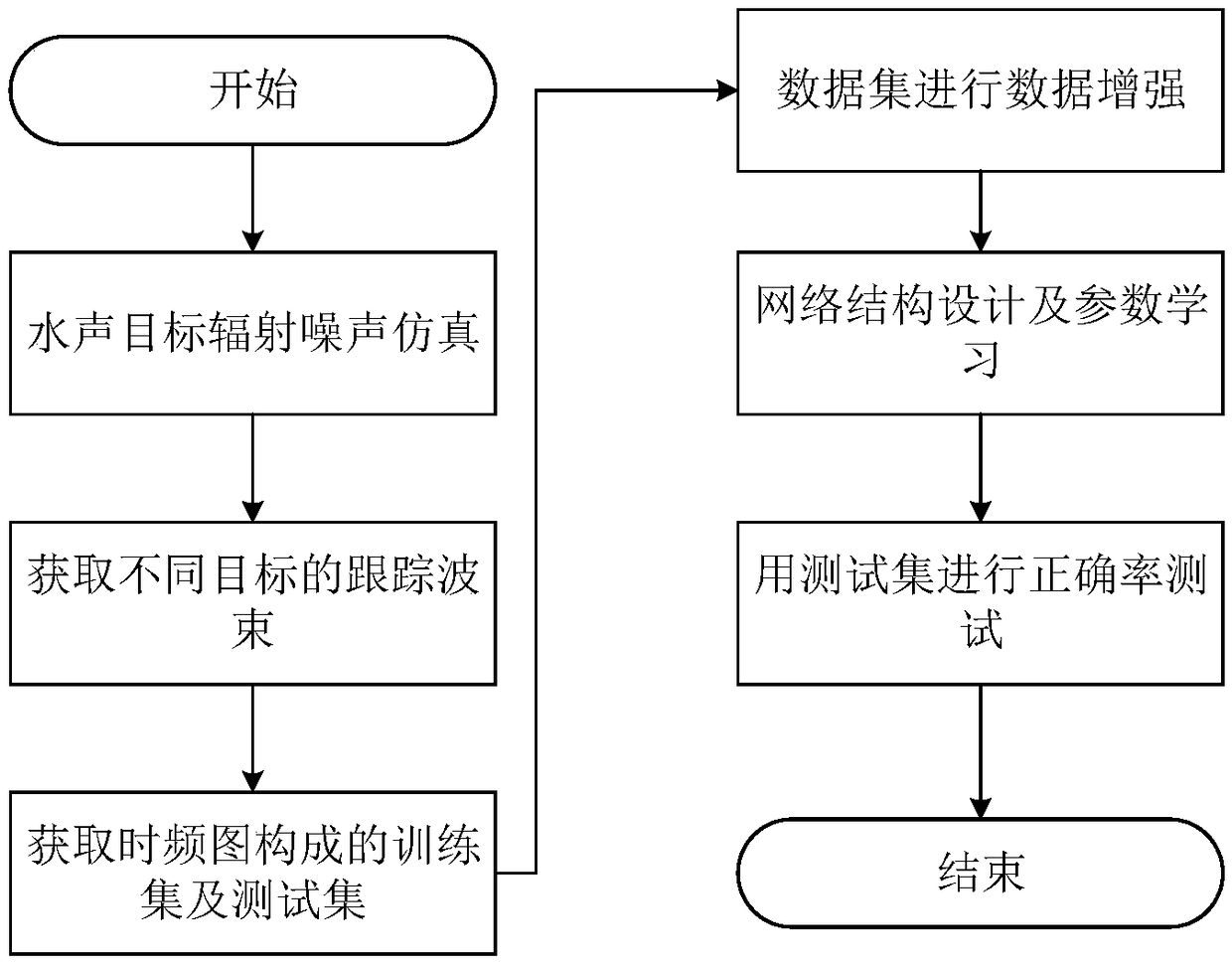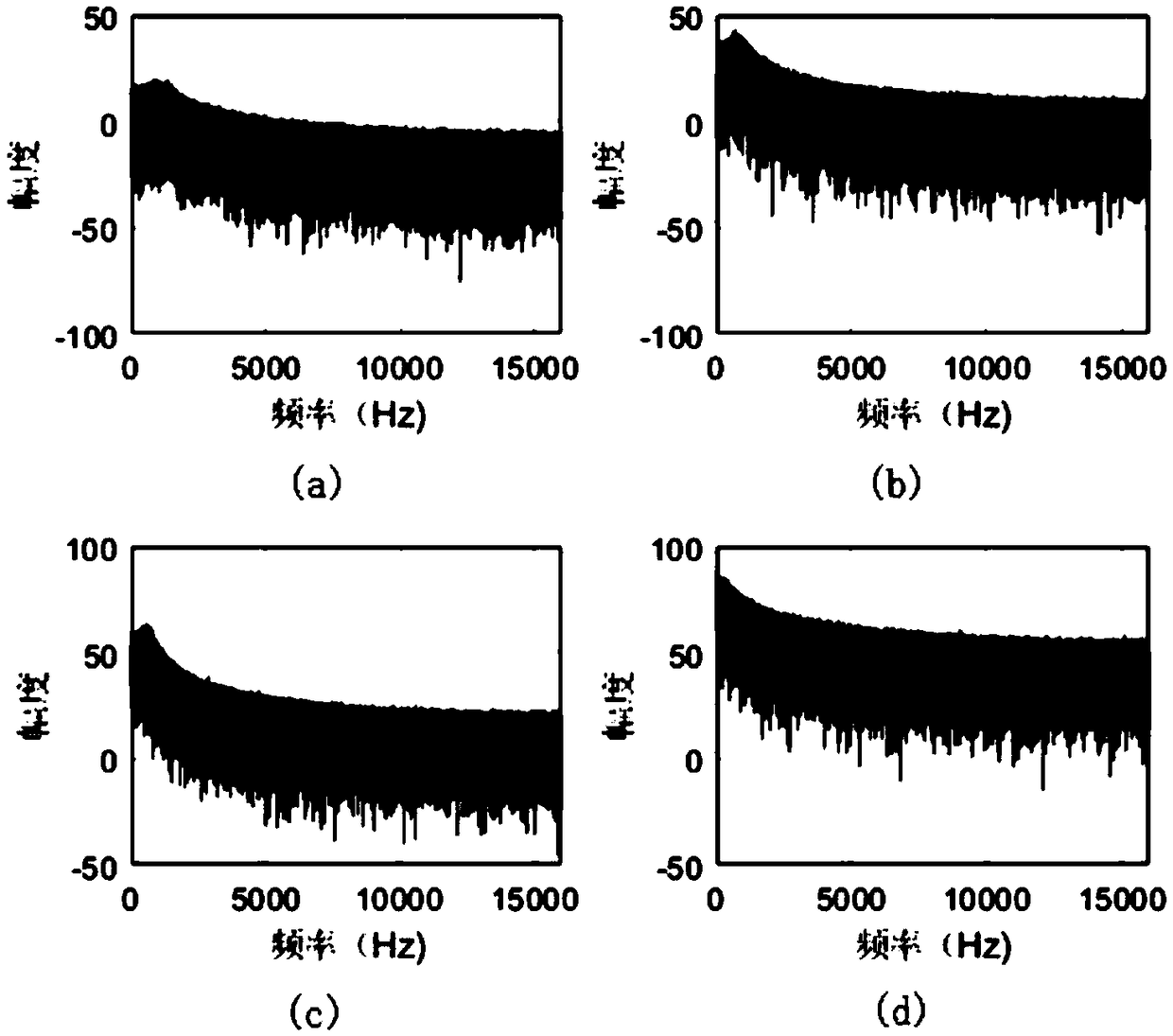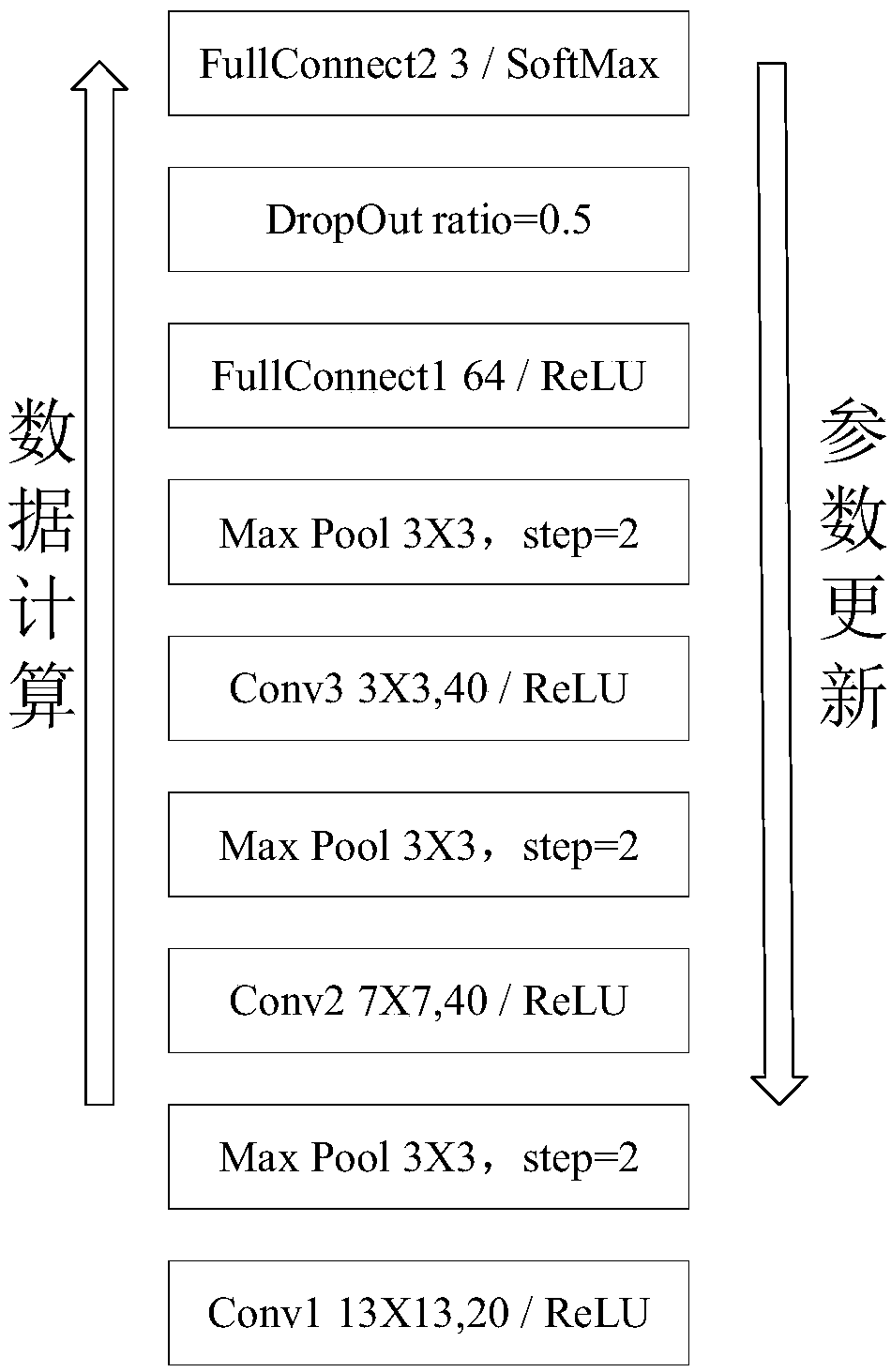Underwater target identification method based on convolutional neural network
A convolutional neural network and underwater target technology, applied in the field of underwater target feature extraction and target recognition, to achieve the effect of low economic cost
- Summary
- Abstract
- Description
- Claims
- Application Information
AI Technical Summary
Problems solved by technology
Method used
Image
Examples
Embodiment Construction
[0067] In order to make the object, technical solution and advantages of the present invention clearer, the specific implementation cases of the present invention will be described below in conjunction with the accompanying drawings.
[0068] The invention discloses an underwater target recognition method based on a convolutional neural network, comprising the following steps:
[0069] Step 1. Simulate the continuum component modulation signal R in the radiated noise of the underwater acoustic target c (t) and the line spectral component R l (t), constituting the underwater acoustic target radiation noise R(t), R(t)=R c (t)+R l (t);
[0070] Among them, the continuum component modulation signal R in the radiated noise of the underwater acoustic target c (t) acquisition steps are as follows:
[0071] (A.1) Using the three-parameter model method to simulate the power spectrum of the stationary continuum Gxf(ω t ):
[0072]
[0073] where ω m , ω c and λ are the three...
PUM
 Login to View More
Login to View More Abstract
Description
Claims
Application Information
 Login to View More
Login to View More - R&D
- Intellectual Property
- Life Sciences
- Materials
- Tech Scout
- Unparalleled Data Quality
- Higher Quality Content
- 60% Fewer Hallucinations
Browse by: Latest US Patents, China's latest patents, Technical Efficacy Thesaurus, Application Domain, Technology Topic, Popular Technical Reports.
© 2025 PatSnap. All rights reserved.Legal|Privacy policy|Modern Slavery Act Transparency Statement|Sitemap|About US| Contact US: help@patsnap.com



